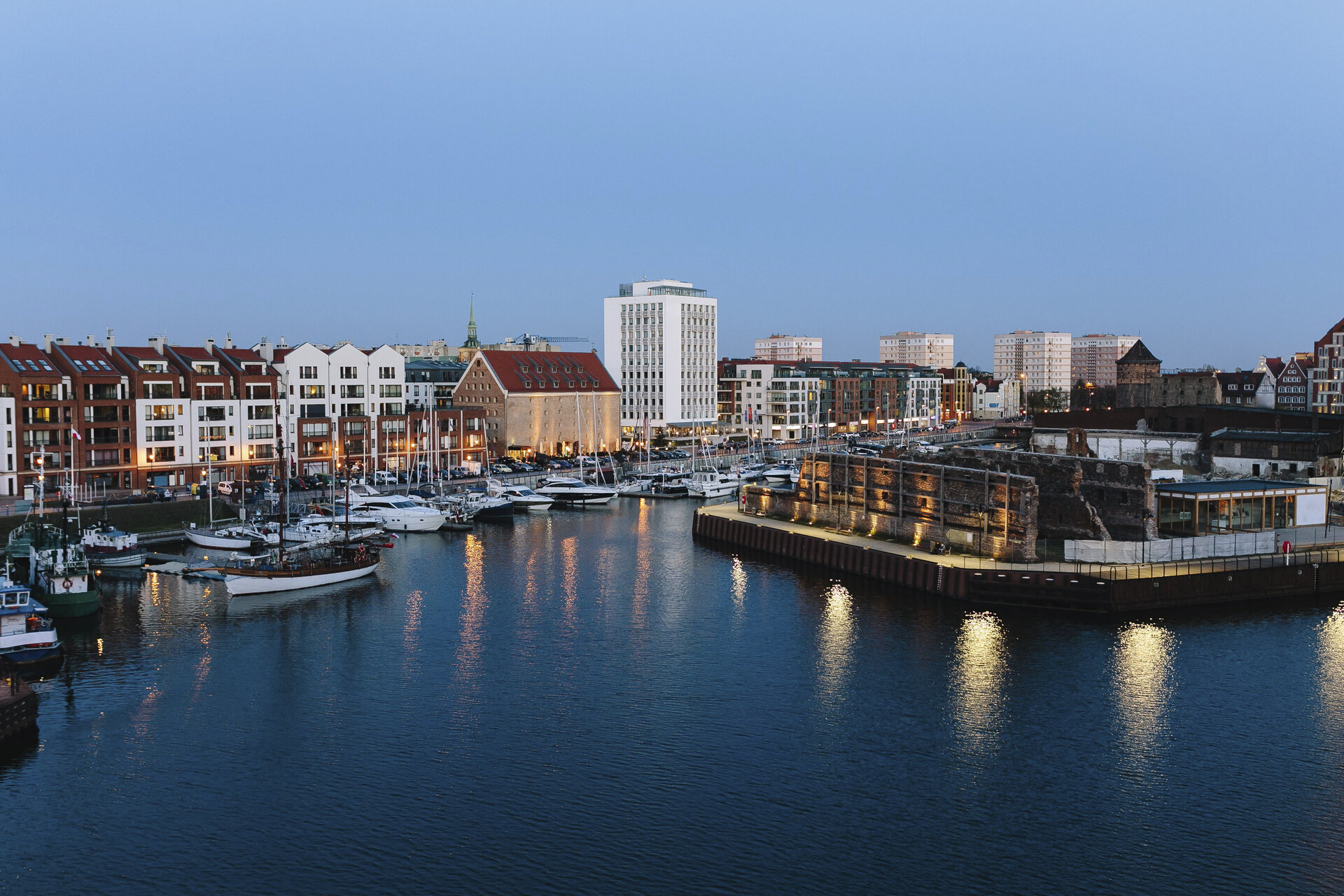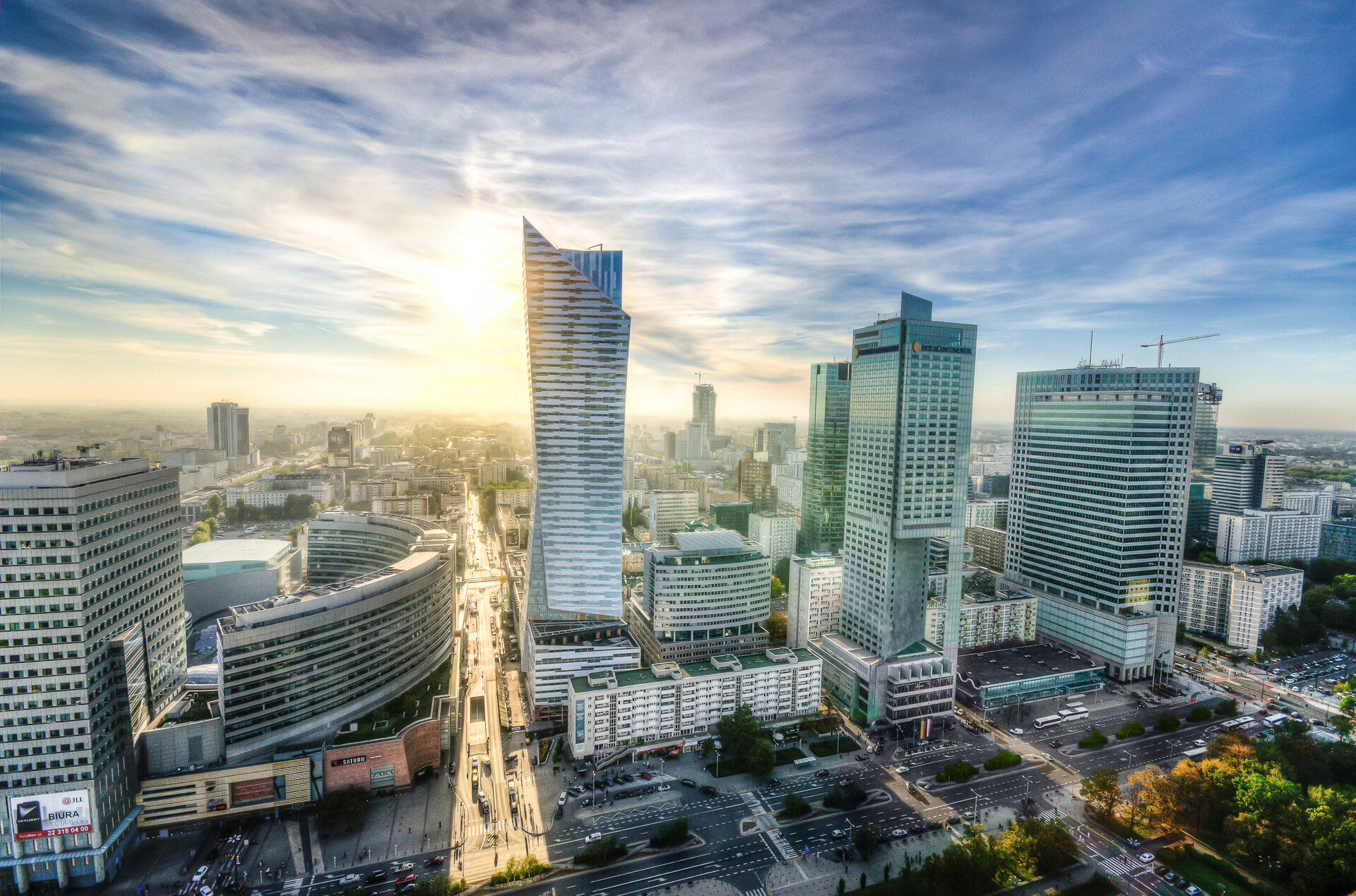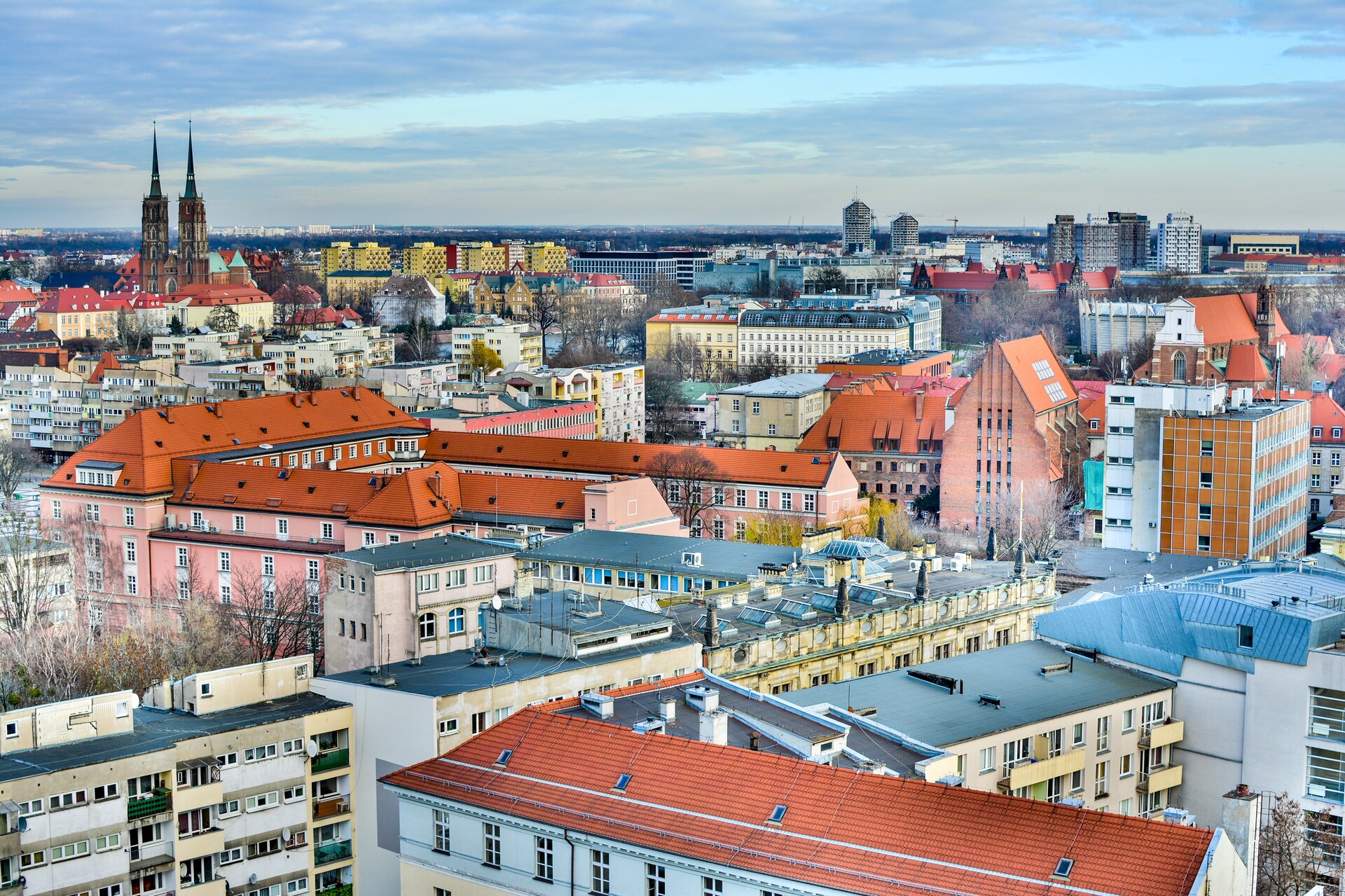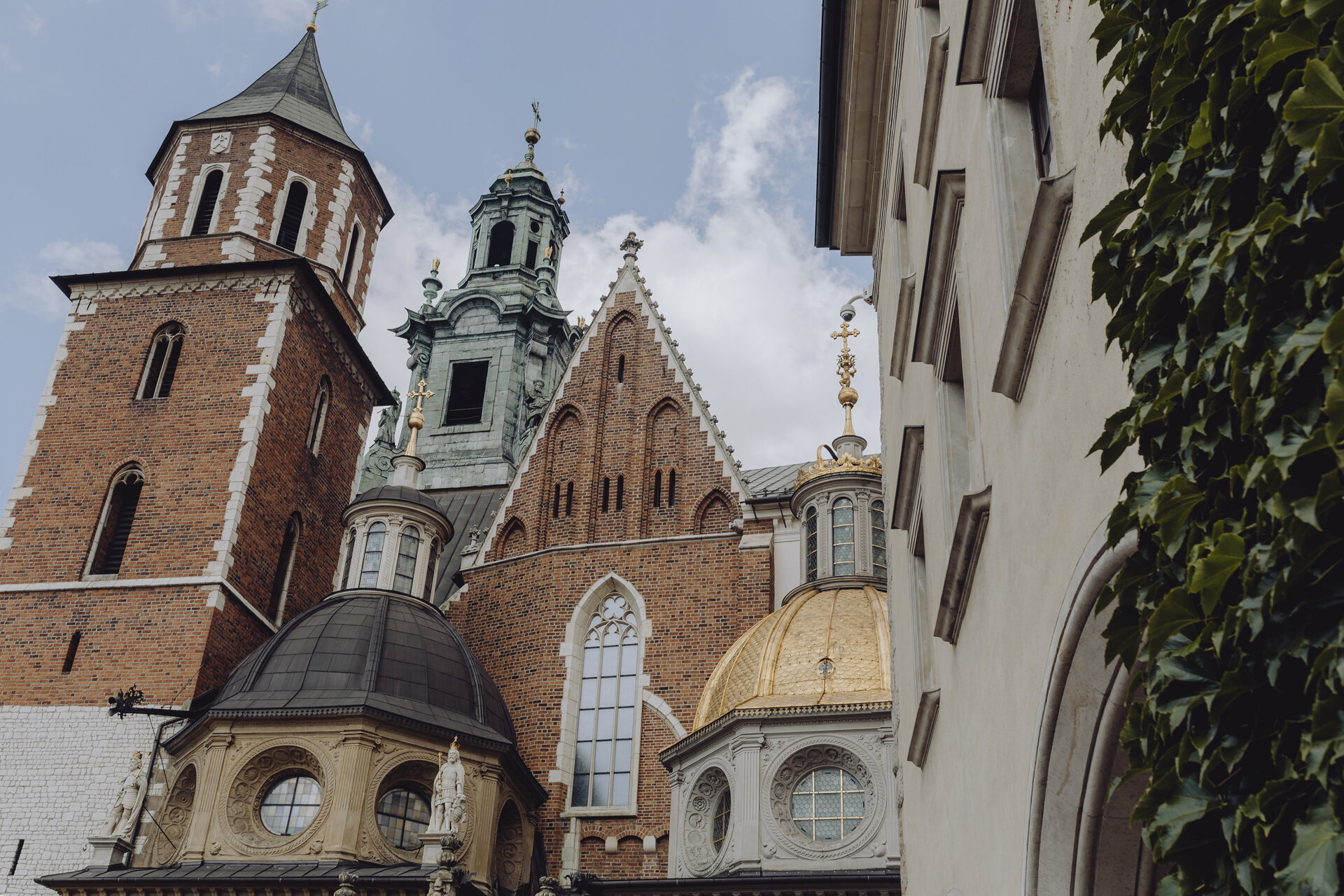Travelling around Poland
For the next 5 and a half years Poland is going to be your temporary home so why not go and see all the beautiful, vibrant, colorful things the Polish culture has to offer.
From its stunning nature filled with mountains, national parks, rugged coastlines, to its fourteen UNESCO World Heritage sights and unique natural wonders such as the world's oldest salt mine, to its authentic cuisine all combined with a rich, dark, infamous history, Poland is a country that has a lot to offer and will keep you on your toes.
Below are listed just some of the places that are a must-see when travelling around Poland and all the reasons why they are each unique in their own way.
Gdańsk
Located in the north of Poland and situated right at the mouth of the Vistula River on the Baltic sea, the city of Gdansk is Poland’s main seaport. The ancient, industrial city of Gdansk has been labelled as one of the most beautiful cities located on the seaside and from its views, it is no wonder why this city is very popular amongst not only Polish people but also tourists.
Gdansk was one of the cities that was greatly damaged during the second world war. After the city was returned to Poland in March of 1945 (following German occupation), Gdańsk has since been fully reconstructed and amongst the new buildings stands one of its oldest buildings: St.Catherine’s church (which dates back to the 14th Century). Another structure that managed to stay safe from the wreckage of war is the world’s largest brick church of St. Mary’s. The medieval Town Hall has been restored to old but new ways. The dedication to its history has helped keep this magical city alive.
The city is also commonly known for having two main port areas: The older being Now Port (aka New Port in English) which has an important section dedicated to industrial center for shipyards, metallurgical and chemical plants, timber mills as well as food-processing facilities. In 1568, the Polish maritime commission first started there in order to handle defence and trade. In modern days, shipbuilding in that area has become an important source of foreign currency.
The second port, a newer and much larger one, is known as Półocny (North Port in English). This port opened up in nineteen-seventy-five and mostly handles coal exports and petroleum imports. The city also has an international airport and a ferry that connects to Sweden making it a very convenient place in regards to domestic and international travel.
Amongst the industrial importance of this city, there is also some other (just as important) industries such as schools dedicated to medicine, engineering, and fine arts. It also has a large maritime center, many stunning churches, museums, theatres, gardens, concert hall and opera house, all of which bring the vibrant city to life. The National Museum and the Maritime Museum are both also very important attraction sights to see.
Between all the old and new sights to see and huge historical importance, it is no wonder that Gdansk is one of Poland's must-see areas.

photo: rawpixels
Warsaw
The capital city of Poland was one of the cities occupied by Nazi-Germany that was majorly affected the most. After the end of world war two, the city was left in complete ruins. More than 85% percent of it being destroyed to the point where restoration of the buildings was near, if not, impossible. Buildings were either turned to ash and dust by the military attacks or burnt to the ground by the Nazi forces.
Very soon after the war ended, the Polish citizens and civilians embarked on the effort to build up and reconstruct the entire city along with its historical centers by using the original blueprints and plans of their then non-existent city.
As you walk through the city centers of Warsaw now, you can see the result of this effort: Baroque and Renaissance merchant houses that are the perfect replicas of the originals.
Even though world war two caused a huge loss to the landscape of the city, it also impacted many of the historical museums that resulted in the loss of historical, archaeological artifacts as well as collections that were given to the museum from the palaces that showed the rich historical past of Poland. However, today, Warsaw is still home to over 60 stunning museums.
In addition to the museums dedicated to art and history, it has got some more modernized museums with their own special twist. For example Museum of Posters (the only one in the world), the Museum of the World War Two Warsaw Uprising, the Neon Museum and the Museum of Caricature.
The National Museum, (a museum based on the history of the city of Warsaw) is also the home to the largest collection of paintings and artworks in Poland. This collection includes a number of works of art from the private collection of Adolf Hitler.
Another sight that must be seen when visiting Warsaw is the eighteenth-century Lazienki Palace with its stunning, colorful and vibrant gardens. This location expands seventy-six hectares of pure urban forest as well as being home to a planetarium, an outdoor theatre, pavilions, just to name a few.
If you are looking for a more adventurous and outdoorsy kind of attraction then be sure to take a walk down the Krakowskie Przedmiescie- Warsaw’s best architectural street. On this lengthy road you will find old homes, numerous monuments, the Presidential Palace and the Polish Academy of sciences all within steps from each other.

photo: rawpixels
Wrocław
The old city of Wrocław is commonly termed WrocLOVE, due to the admiration it gets from visitors all over the world who can’t help but falling in love with it and in it. Located in the southwest and Lower Silesia of Poland, it is termed as one of the most livable places in Europe.
However, looking back on the history of this city, it has not always been a part of Poland. Over the centuries it has been in the possession of the Kingdom of Bohemia and then to Prussia and even Germany. It has only been since 1945 that Wroclaw was officially a part of Poland, happening only after the end of the second world war and the change of some of Europe's border lines.
If you’re more of a historical kind of tourist then be sure to go and visit the Lubomirski Museum. It is there where you can really learn about the complex historical background of the city of Wroclaw. The museum covers everything from the occupation of the Nazi forces and later to the Soviet Union (in addition to some other events during world war two). If you're looking for the history of the city that dates even further, The Wroclaw City Museum covers the last one thousand years of Wroclaw’s history.
Rynek (or otherwise known as the Main Market Square in English) is not only amongst the largest market square in just Poland but also in Europe and in addition to that, it is Wroclaw’s oldest area that dates back all the way to the thirteenth Century. In Rynek, you can see St. Elizabeth’s church and the Old Town Hall. Nearby (only a few steps away) is the Pan Tadeusz Museum which showcases the multimedia exhibitions dedicated to the customs of Poland.
Racławice Panorama is an important aspect of Polish history. It shows the Battle of Racławice that took place on the Fourth of April 1794. It ended in a victory for Poland and a large blow to the Kościuszko Uprising against Russia.
In order to commemorate such a triumph, on the one-hundredth anniversary of this battle, Lviv based artist completed a 15x114 metric cycloramic painting of the battle. However, due to the sensitivity of the subject with it having a connection to Russia, the painting did not see the light of day until 1985. Since then this painting depicts a battle that is engrained in the national memory of the Polish.
The Wroclaw fountain is a monument that is from the UNESCO-listed Centennial Hall and it is one of Poland's largest fountains, covering one full hectare.
This fountain was finished in two-thousand and nine in order to celebrate the twentieth-anniversary of the first free elections in the post-war era of Poland. The fountain has eight hundred programmable lights that can change color as well as three-hundred adjustable water jets with three nozzles that can shoot flames into the air at great lengths. On the weekends at ten in the evening, there are special shows shown from the fountain.

photo: rawpixels
What better way for a vet student than to spend a day at the Wroclaw Zoo. Home to the third most species of any attraction in the world (around 1382) it is Poland's most visited, largest and oldest zoos in the country. With new exhibits coming every year, the most recent being the Afikarium aquarium complex which opened in 2014. In addition to this, the zoo has a combination of our different environments dedicated to the various species of animals: Red Sea Beach and reed, East Africa, Mozambique Canal and the Congo Jungle. The Afikarium has got freshwater and saltwater aquariums and houses pools for crocodiles, rays, brown sharks and hips.
Kraków
This is one of the absolute oldest cities in Poland dating back to the seventh century, Kraków was already inhabited by a large population. Much to its luck, the city managed to escape most of the damage and destruction that was caused by world war two and Nazi-occupied Poland. The majority of the damage was done to the other cities. Krakow’s Old Town center is still intact in the same manner as it was when it was first built: with its stunning medieval architecture that is unique to the city.
Wavel Castle, also in Krakow and its historic district of Kazimierz ( which is also known as the Old Jewish Quarter) are both listed under UNESCO World Heritage Sites.
Aside from the vast majority of parks and nature, Krakow is a city with a large number of museums that are a must-see. The National Art Collection at the Wawel is a place where visitors are able to see the period furniture from centuries ago, massive collections of Flemish tapestries, royal jewels and a large collection of weapons and armor that goes all the way back to the fifteenth century.
For a more unusual, quirky, but in-depth look into a more historical and ancient view of the city of Krakow, there is a museum called the Rynek Underground Museum which shows the development of Krakow from the underground point of view and how it went from old historic structures to the now beautiful and vibrant city that we see today.
A famous historical figure during the second world war was Oskar Schindler ( you might recognize his name from the famous 1994 movie directed by Steven Spielberg- Schindler’s List). Oskar Schindler owned an enamel and metal factory which is now one to two museums. One part of the building was converted into the Museum of Contemporary Art, whilst the former office of Mr Schindler (and much of the former factory floor) is now made into a branch of the Historical Museum of the City of Krakow.
His office has since been preserved and kept intact since the second world war and is now an exhibit dedicated to his life and the lives of the many Jews he saved in his factory. One section of his office holds a section called the “Survivors Ark” and serves as a look into the past filled with enamel pots, much like the ones he built in his factory.
The rest of the factory shows a number of cinematic exhibits that present and show what Kraków looked like during the war and the impact the Nazis had on not just the city and the civilians that inhabited it, but the whole country of Poland. In a more immersive exhibit, there is a stage-like reconstruction of what the streets and spaces (from tram seats to a standard Jewish apartment at the time) looked like.
Despite the doom and gloom, and the infamous historical tragedies that happened, it really is a side that everyone must see at least once in their lives.

photo: rawpixels
Wieliczka
Some of the more notable points of interest include the world's oldest functioning salt mine Wielczka in a town closeby. A salt mine that is still just as important for the locals today as it was hundreds of years ago back in the thirteenth century however for different reasons. Not only is it one of the world's oldest but also the longest-working saltiness. However, it stopped its commercial operations back in 1996 and has since become an artistic tourist attraction.
This salt mine is now home to four chapels, corridors upon corridors and various stunningly beautiful statues, all of which are hand-carved out of the walls of the rock salt. Below, around three-hundred-and-seven meters underground, they have reopened the original shafts, pathways and passageways in order for the public to really explore the original pits and chambers. As you go further and deeper underground, there is a lake below that shimmers against the candlelit walls.
Auschwitz-Birkenau
Sometimes together with the salt mine tours, there is another part of the tour to the Auschwitz-Birkenau Concentration Camp in a city called Oświęcim. In a darker part of Poland's history, the Auschwitz one and Auschwitz two Birkenau concentration camps are different forms of must-see. Located about an hour west and outside of Kraków's city center, the camps offer a darker, more sobering look into Poland's past.
During the second world war, between the years of 1942 and 1944 in Nazi-occupied Poland, there were over nine-hundred-thousand Jews that were brought to the camps here from other German-occupied counties. In addition to them, political prisoners, Roma and other ethnicities were also sent to these camps.
Unfortunately, less than 10% of the people that were brought to these camps ended up surviving and making it out alive. At the end of the war, when the Soviet forces managed to advance into Poland, in order to get rid of the evidence, the Nazis managed to destroy a lot of the gas chambers, crematoria, as well as other forms of evidence, before fleeing. However, even with all the effort in trying to destroy as much as they could (by also burning a lot of the parts of the camps) many structures still remain to this day.
The camps, which also included over three hundred barracks and hundreds upon hundreds of crematoriums and other buildings can only be explored as a part of the tour.

photo: rawpixels
the Tatra Mountains
Onto happier, more natural tourist attractions is the Tatra Mountains and National Park: a natural border between Slovakia and Poland. Deep within the Tatra National Park surrounded by enormously elevated mountains and the Swiss pines, there is a lake (Morskie Oko Lake) that is favorited as a destination for people of all ages. Reaching this lake as a final destination requires an easy, albeit long, paved hike through beautiful and shaded forests.
The lake changes color throughout the year: from a deep, sharp, shade of blue to a softer more turquoise hue.
Tatras National Park is not only in Poland but it extends through both Poland and Slovakia. On the Poland side, it is home to over six hundred caves, snow-covered peaks and a large number of waterfalls, including the seventy-meter-high Wielka Siklawa. The majority of this park is easily hike-able, with over two-hundred-and-seventy kilometers of trails and all shapes, sizes and lengths. Rysy, which is located in the Polish Tatras stands at two-thousand-five-hundred meters high as Poland's highest mountain.
Toruń
One of the oldest cities in Poland, Toruń’s history dates back to the eighth century. It is one of the cities that managed to stay intact during the second world war and was not bombed, and because of this, the city has kept its medieval charm. From its central marketplace and its many gothic houses with wooden beams, these buildings are still standing.
One of these houses belonged to the famous astronomer Nicolaus Copernicus and has since been converted into a museum that depicts the life and the work of the famous scientist.
In addition to that, the Old Quarter area has been designated as a UNESCO World Heritage Site.
About the author

Nahal is a 4th-year US student of veterinary medicine who in her free time loves strolling around the Wrocław main square, restaurant hopping and always enjoys a cup of good coffee. She is fascinated by exotic animals and after graduation plans to start her professional career in a zoo.






